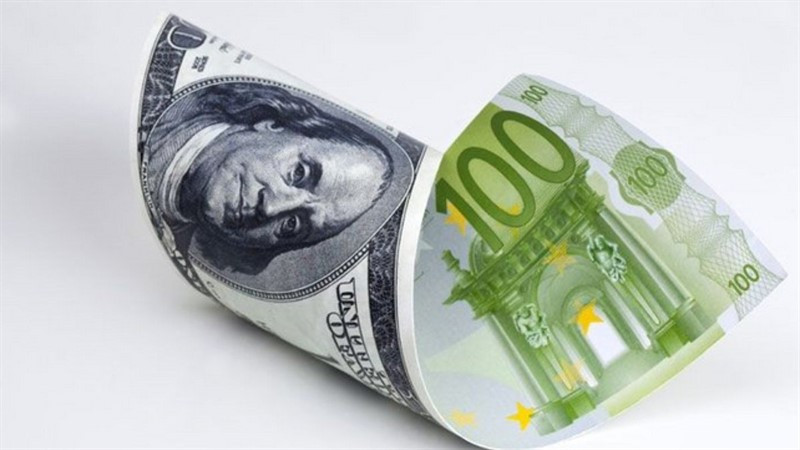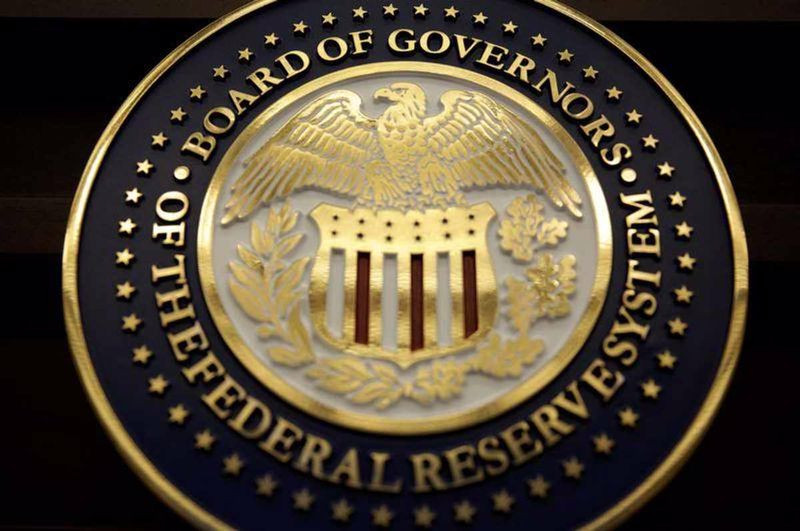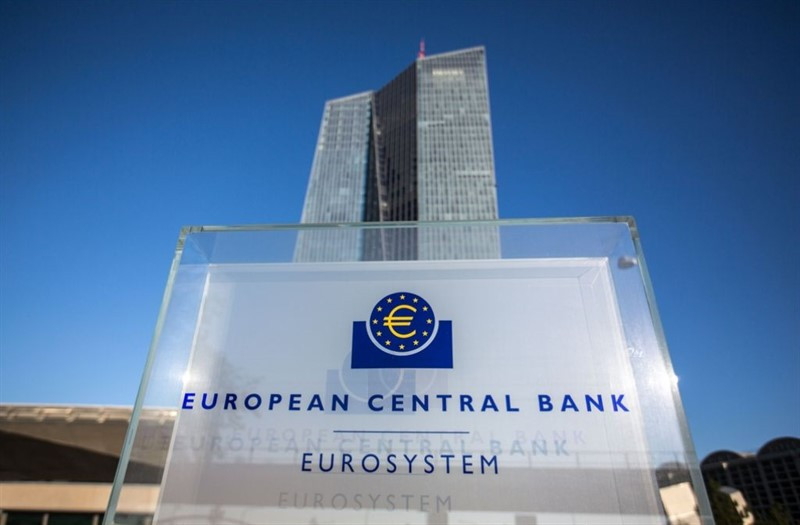
The greenback has already reached unprecedented levels in the last two decades. Analysts say there are few signs yet that it will stop.
Under the current conditions, the USD index may well rise to 110 points, levels that were last observed in June 2002.
The dollar will remain strong for at least the next three months due to aggressive expectations of an interest rate hike by the Federal Reserve and will retain its appeal as a safe haven asset due to concerns about a global recession, strategists surveyed recently by Reuters predict.
History shows that the US currency tends to rise in the months leading up to the first increase in the cost of borrowing in the United States in rate hike cycles, before weakening after new rate hikes.
However, so far the greenback has shown few signs of slowing down. The USD index has risen 8% since the Fed raised rates on March 16 for the first time since December 2018.
The fact is that the widespread tightening of monetary policy under the leadership of the Fed, observed in recent months, has increased fears about a global recession, which has dealt a blow to risk-sensitive assets and supported the protective dollar.
"People who say that the greenback will weaken because the market does not expect such a big increase in interest rates from the Fed, as before, forget that the US currency is also a safe haven," Rabobank reported.
"If global economic growth slows down, what are you going to buy if you sell USD," the bank's specialists wonder.
According to them, the lack of alternatives is likely to keep the greenback in an advantageous position in relation to almost all currencies.
Something has to change radically in order to reverse the situation.
"A lot of capital has flowed to America. And if there is nothing tempting, then the dollar may remain strong. For capital to leave the United States, we need to see better economic prospects in Europe and elsewhere," said Record Currency Management.

Most experts estimate the probability of a recession in the United States at less than 50%.
Analysts at The Goldman Sachs note that the chances of such an outcome are 30% this year, and strategists at Bank of America say they are about 40%.
JP Morgan experts believe that the option of the so-called "soft landing" remains possible, but point out that this is only one of three possible ways to develop the economy in response to the tightening of the Fed's monetary policy.
"The American economy was facing three doors by the middle of the year," they said.
The bank's first scenario foresees a recession in the United States in the second half of 2022 amid rising inflation and tightening financial conditions.
"The stability of the labor market can offset the risks of a recession, but the probability of its occurrence due to a sharp drop in consumer spending is 40%," JP Morgan notes.
According to the bank's second scenario, the American economy will avoid recession in 2022 due to the stability of the labor market and consumer spending.
"Continued economic growth may keep core inflation above 3% by the beginning of 2023. In this regard, the Fed will be forced to raise rates significantly above 4%, and a recession may occur in 2023," JP Morgan said.
The third scenario, which the bank's economists consider basic, corresponds to the Fed's goal of achieving a "soft landing".
"We expect that the US regulator will continue to tighten monetary policy, but will not raise the rate above 3.5%, which will allow the national economy to continue growing in 2024. The probability of such a scenario is estimated at 42%," JP Morgan reported.
Some market participants are holding dollars because they believe that the United States will survive the impending global economic downturn better than other countries.
Societe Generale strategists believe that USD can win even in a global recession.
"The fear of a recession is global in nature and does not depend on US data. If the data for the United States is weak, we expect the European data to be just as weak," they said.
Commerzbank analysts have a similar point of view. They point out that the expectation of a recession in the US is no longer a problem for the dollar if Europe also slides into recession.
"The recession in Europe caused by the gas crisis is likely to be deeper and longer, since it cannot simply be stopped by adjusting monetary policy. Therefore, it is quite logical that in such a situation, the dollar will be the winner," Commerzbank noted.

According to some experts, the broad rise in the dollar is due to the fact that the Fed is likely to continue to raise interest rates more aggressively than many other world central banks, as it faces the worst inflation in the US in recent decades.
"The Fed may eventually have more opportunities than many other central banks to continue normalizing policy," UniCredit analysts said.
Fed Chairman Jerome Powell and his colleagues have already made it clear that the central bank intends to take control of inflation at all costs.
The minutes published yesterday from the June FOMC meeting showed that, discussing possible further actions, the meeting participants noted that the Fed would have to continue raising the rate in order to achieve a slowdown in US inflation to the target level of 2%.
They came to the conclusion that an increase in the rate by 50-75 basis points at the July meeting may be appropriate.
"The Fed leaders also agreed that the current economic outlook requires the FOMC to move towards a restrictive policy. At the same time, they recognized that in case of sustained preservation of increased inflationary pressure, the Fed's policy will have to become even tougher," the document says.
If the Fed continues to raise rates, even though Europe and the United States are sliding into recession, the euro could fall to $0.95, which is about 7% below its current level, Deutsche Bank strategists say.
"We are not ready to go that far yet, but over the past two weeks there has been a clear deterioration in global and euro-specific growth prospects, which, in our opinion, justifies the dollar rally," they said.
The greenback recorded a new 19-year high on Wednesday, rising above 107.20 before retreating somewhat.
The US currency has received decent support from the hawkish minutes since the last FOMC meeting.
Separately, the dollar was supported by the data on the number of vacancies (JOLT) published and the report on business activity in the non-manufacturing sector of the United States from ISM.
The number of open vacancies in the country amounted to 11.254 million in May against 11.681 million in April.
The index of business activity in the US service sector from ISM reached 55.3 points in June compared with 55.9 points a month earlier.

"These data indicate a "hot" labor market and indicate the sustainability of the service sector. This once again confirms the fact that the Fed is unlikely to reduce the pace and intensity of tightening," Mizuho economists said.
Taking advantage of the fact that the dollar took a pause in growth, the EUR/USD pair was able to stabilize and finished around 1.0180 after falling on Wednesday to the lowest level since December 2002 around 1.0160.
Nevertheless, its losses for yesterday amounted to about 0.8%.
"The euro bulls hoped that the obvious and sharp decline in the manufacturing sector of the eurozone would be offset by the strengthening of the services sector. However, it seems that this shift in demand from goods to services (such as travel and recreation) is not materializing. Indeed, signs of travel disruption across Europe may limit how much this sector can contribute positively over the summer. Meanwhile, the risks to the external balance sheets of the eurozone are growing. Export growth remains weak, and high commodity prices increase the region's import costs.
All this aggravates the already weak prospects for the euro," HSBC analysts noted.
The greenback was trading around 106.90 on Thursday, which is about 0.4% lower than the previously achieved multi-year peaks.
The pullback of the dollar gave some respite to the euro. The EUR/USD pair has entered a consolidation phase after a recent fall.
Over the past two days, the single currency has fallen in price against the greenback by more than 2%, having experienced the largest collapse since the height of the panic around COVID-19 in March 2020.
A fall of this magnitude may provoke further losses or become the final breakthrough, which heralds the end of the period of decline, as it was on March 19, 2020. Then the 2% drop was replaced by a steady upward trend, as a result of which the euro rose from $1.0655 to $1.2000 by August of the same year.
However, in the current market situation, the EUR/USD pair is unlikely to be able to break out of the downward trend.
"In the current circumstances, traditional safe-haven currencies, which include the US dollar, seem to continue to show brighter results in the near future," MUFG analysts say.
"The two key catalysts for the USD exchange rate change included in our forecasts are a signal that the Fed is entering a prolonged pause in its tightening cycle and/or a clear peak in energy tensions in Europe due to the cessation of hostilities in Ukraine," Deutsche Bank strategists said.
So far, neither one nor the other has been observed. Therefore, the current dynamics of the USD is nothing more than a technical correction, which ends each rapid bullish rally.
In addition, the fundamental background still remains on the side of dollar bulls.

"The risks of a recession in the US will periodically put pressure on the dollar, but the European energy crisis is a more serious threat to the economic prospects of the eurozone. The upward trend in USD in the medium term is likely to remain for now, while there is room for further reversal of quotes, taking into account the tightening of the ECB policy," Westpac analysts said.
The European Central Bank is preparing to raise the cost of borrowing for the first time since 2011, just at a time when clouds are gathering over the European economy.
Despite the continuing problems of the euro, the decline in the EUR/USD exchange rate may lose momentum in the third quarter, Credit Suisse analysts say.
"The adoption of a plan to combat fragmentation at the ECB meeting on July 21 and a 50bp rate increase at the meeting on September 4 will give markets the opportunity to expect favorable developments for the euro. But we expect to take advantage of the phases of strengthening of the single currency in the direction of $1,0800 to create strategic shorts, waiting for a new test of $1,0340, and then the level of parity," they said.
However, in the current conditions, the ECB seems to have to try hard to convince investors to support the growth of the EUR/USD pair above 1.0800.
The Fed's confident position on interest rates continues to strengthen the dollar.
Money markets forecast an increase in the cost of borrowing in the US by at least another 165 basis points during the remainder of 2022.
This contrasts with the expected 130 basis points from the ECB, which looks an increasingly unlikely scenario given the rapidly deteriorating economic prospects of the currency bloc.

"We still doubt how much the ECB will be able to raise rates, given the energy risks and the more vulnerable economic background in the southern countries of the eurozone. The transition of most other G10 central banks to a more aggressive policy is likely to lead to continued volatility in the markets and support our view that EUR/USD will decline to parity sometime in the second half of this year," Nordea analysts said.
Nomura and BlueBay strategists say that short positions on the euro are a good bet.
"I am increasingly convinced that the euro will fall to $0.98 by August," Jordan Rochester of Nomura said.
Meanwhile, Kaspar Hense of BlueBay Asset Management said he has been selling euros since last month.
"If gas rationing in Europe follows due to a reduction in supplies from Russia, we will see a significant recession in the eurozone. In this case, the single currency will fall to $0.90, although this is not our baseline scenario," he said.
Van Luu of Russell Investments takes a more optimistic view on the prospects for the euro.
"Apparently, the euro has hit a perfect storm. Nevertheless, the single currency is already at a weak level, and there are good chances that it can strengthen next year. I would not rule out parity, given the factors, but personally I would not chase this trend. At least at the moment I would not add anything to the euro shorts," he said.
Goldman Sachs specialists remain bulls on EUR for the next 6-12 months, expecting structural changes in the ECB's monetary policy.
"A key component of our medium-term bullish outlook is that structural changes in the ECB's monetary policy will help to attract private sector investors again, which will help reverse the outflow of fixed income funds worth €3 billion since the beginning of the era of negative rates. But if the ECB acts slowly for fear of causing stress in the sovereign bond markets, risk-free rates may remain moderate for a longer period," they said.
"We still believe that the ECB's relatively cautious approach is likely to delay, rather than derail, the euro's recovery," Goldman Sachs added.
As for the current picture, the nearest resistance for EUR/USD is the level of 1.0200. If the pair manages to turn it into support, it will be able to extend the recovery to 1.0250 and 1.0300.
On the other hand, the 1.0160 mark forms initial support on the way to 1.0130 and 1.0100.
 English
English 
 Русский
Русский Bahasa Indonesia
Bahasa Indonesia Bahasa Malay
Bahasa Malay ไทย
ไทย Español
Español Deutsch
Deutsch Български
Български Français
Français Tiếng Việt
Tiếng Việt 中文
中文 বাংলা
বাংলা हिन्दी
हिन्दी Čeština
Čeština Українська
Українська Română
Română

